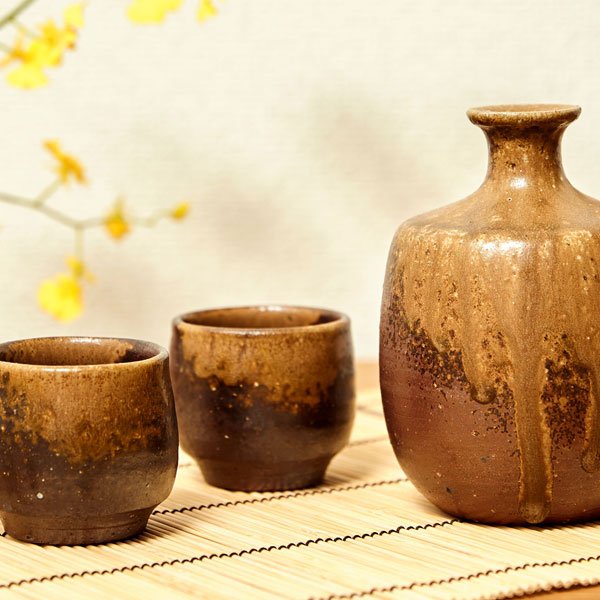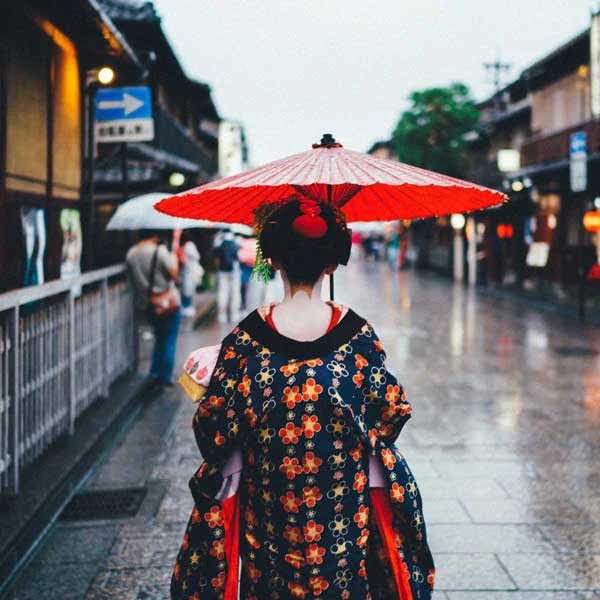Japanese Tea Houses: All You Need to Know About Chashitsu
by Anne Walther | CRAFT
© Tokujin Yoshioka, The Glass House
What is the most important aspect of the Japanese tea ceremony? You might think the tea, but perhaps even more influential is the setting. After all, it is the chashitsu or tea house that provides the serene atmosphere, and the very sense of ceremony itself.
So what exactly is a Japanese tea house, and what makes the very best chashitsu? Let’s take a look!
What is a Japanese Tea House?
© Kiyosumi Garden, Stepping Stones
In the Japanese tradition, chashitsu (茶室) are tea rooms designed to be used for tea ceremony gatherings. Every term with the prefix cha- is related to tea, as chaseki (茶席, place for tea), an outdoor or indoor space used for tea ceremony, chabana (茶花, tea flowers), flower arrangement dedicated to the tea ceremony, or chanoyu (茶の湯, hot water for tea), tea ceremony with matcha preparation. Discover more about 19 Essential Japanese Tea Ceremony Utensils!
The term chashitsu includes free-standing architectural buildings designed for tea ceremony and specific rooms intended for tea ceremony.
It implies a tea room, where the guests are welcomed, or a room and its surrounding facilities, including the garden path leading to it. Wooden buildings of small dimensions, chashitsu are located in the gardens or grounds of private Japanese homes, in parks, museums or temples.
© Benh LIEU SONG / Creative Commons, Shiguretei Tea House
In English, we often make a distinction between a free-standing construction for tea, referred to as tea house, and a tea ceremony room within a building. Tea rooms may also be situated within larger tea houses, or within private homes or other structures not aimed for tea ceremony.
History of Japanese Tea Houses
Tea Master by Adachi Ginko, 1885
In earlier times, several terms were used for spaces used for tea ceremony, such as chanoyu zashiki (茶湯座敷, sitting room for chanoyu), sukiya (place for poetry and aesthetic interests), and kakoi (囲, divided space).
In the fifteenth and sixteenth centuries, the practice of tea was first performed by warriors and monks in Kyoto. It was a practice that encouraged humility and simplicity. However, Kyoto's elites enjoyed tea competitions and refined gatherings with high quality utensils, elegant clothes, and sumptuous decorations. Since then, these two expressions of the tea ceremony practice remained complementary. They were carried out in traditional rooms of a noble residence or in a small pavilion intended for entertainment.
© John Weiss / Creative Commons, Kodai-ji
Literature indicates that the shogun Ashikaga Yoshimasa (1436-1490) constructed the first chashitsu at his villa in Kyoto. It is considered to be the first tea room in the history of chanoyu. Separated from the main building, it comprised 4.5 tatami mats, arranged in a svastika auspicious layout. The latter became later on the most conventional layout for a tea room.
During the Muromachi period (1336 – 1573), tea rooms were built in the shoin-zukuri architectural style, a very traditional style that is still employed in contemporary tea rooms. The term shoin originally meant a lecture or study room within a temple. It became later a drawing room, a study room, or a space devoted to various cultural activities. The most significant features of shoin-zukuri rooms were square pillars and tatami floors.
Tea Ceremony by Mizuno Toshikata, 1896
The tea house as a stand-alone building came about under the impetus of two tea masters who brought modesty and simplicity to the tea room’s architecture. Takeno Joo (1502-1555) used natural bamboo and raw wood. The wattle and daub of the walls was left exposed.
Sen no Rikyu (1525-1591) transformed the tea room into a small, thatched pavilion, called soan chashitsu, which resembled a mountain hut. He limited its size, the number of decorative objects, utensils and floral elements, and used simple materials (earth, straw, undecorated wood). This new style of tea ceremony was named wabi-cha, as it embodied the ideals of wabi sabi in the practice of tea (What is Wabi-Sabi?).
During the Sengoku period (1467-1615), tea houses were built by daimyos (feudal lords), merchants, samurai or zen monks who practiced tea ceremony. During this troubled period, tea houses embodied an ideal of simplicity and tranquility.
How to Build a Japanese Tea House?
© Kiyosumi Garden, Ryotei Tea House
A traditional Japanese tea house is usually surrounded by a garden named roji (露地, dewy ground). This garden is made up of elements necessary for the accomplishment of the tea gathering and for meditation before entering the tea house. A stone path allows the progression of the guests (find out more about Authentic Japanese Garden Design).
Near the tea house is a stone water-basin, where the guests have to cleanse their hands and their mouths before entering the tea room without shoes through a nijiriguchi (crawling-in entrance). This low and square small door separates the quiet tea space from the bustling outside environment. It also means that people of any social status or rank have to bend and crawl in through the small door to enter. This has to be done on all-fours, on clenched fists, sliding on the knees. Samurai had to leave their swords outside of the tea room.
© 2019 Periplus Editions (HK) Ltd., Inside 5 Timeless Traditional Japanese Houses
Besides the nijiriguchi, the guests' entrance, there may be several more entrances. There is at least another entrance for the host, named sadoguchi, that leads to the mizuya (preparation area).
In terms of size, the smallest tea house usually has two rooms: the main room, where the host and guests sit and where tea is made, and the mizuya, where the host prepares the utensils and the sweets. The tea house has a low ceiling, as the host and his guests sit in seiza (正座, proper sitting) on the floor. If you want to find out how, check out Sitting Seiza: 3 Comfortable Ways to Sit on the Floor.
© Kevin Hulsey, Tatami Layout
There is no fixed tatami layout in chashitsu. The complete construction of a tea house may be reduced to only three tatami mats. A small tea room may have a total surface of 1.75 tatami mats. It comprises a full tatami mat for the guests and a daime (台目), 3/4 the length of a full tatami mat, for the host.
Large tea houses may have several tea rooms: a waiting room, a welcoming area where guests may remove their shoes, a changing room, bathrooms, a large mizuya and sometimes several other rooms, as well as a garden or an outdoor waiting area. They may comprise 10 tatami mats or more. For more details about tatami floorings and their layouts, head over to What are Tatami Mats? All You Need to Know.
© Kengo Kuma, Vancouver Tea Room
Nevertheless, 4.5 mats are generally considered as a standard for modern tea rooms and this type of room is named koma (small room). Chashitsu that are larger than 4.5 mats are named hiroma (big room). Chanoyu (matcha tea ceremony) tea rooms are usually smaller than shoin-zukuri-style rooms, which can accommodate more guests during senchado tea gatherings.
All materials used in the tea room are simple and rustic. With limited views on the outside environment to favor concentration, windows are modest and covered with shoji paper panels, allowing sunlight to enter the room. If you are interested to know more about shoji, check out our article What are Shoji? Complete Guide to Japanese Paper Screens.
What are the Most Important Elements of the Tea House?
© 663highland / Creative Commons, Tokonoma
One of the most important areas in the tea room is the tokonoma (床の間, scroll alcove) where a scroll of calligraphy or a brush painting is hung. A flower arrangement named chabana (茶花, tea flowers) is often placed in the tokonoma. Guests are seated next to the tokonoma, the first guest being the closest to the alcove.
A kakejiku (掛軸, hanging scroll) is hung in the tokonoma and is always related to the season or to the occasion. A calligraphy (a word, a phrase, or poetry) or a painting (birds, flowers, or a landscape) is chosen by the tea master to reflect the day’s tea ceremony. The kakejiku’s frame is often adorned with antique Japanese brocade.
Chabana (茶花, tea flowers) is a seasonal tea arrangement placed in a simple basket or vase, which is often made of bamboo, bronze, glass, glazed or unglazed ceramics. Chabana doesn’t use props, as in ikebana. The arrangement should evoke the natural aspect of a garden.
© Benh LIEU SONG / Creative Commons, Tatami Alcove
The tokobashira (床柱, supporting pillar), the tokonoma’s most important pillar, is crafted with great care. High grade wood or wood that conveys a wabi sabi sense of beauty is employed.
Japanese red pine tree (Pinus densiflora) is occasionally employed as tokobashira, and its bark is often kept on the pillar. The opposite pillar located on the other side of the tokonoma is named aitebashira (partner pillar). The bottom beam is called tokogamachi.
Often made of Japanese red cedar (Cryptomeria japonica), Japanese red pine (Pinus densiflora) or paulownia, the otoshigake (落としがけ) supports the short wall in front of the tokonoma and acts as a lintel.
© Kengo Kuma, Vancouver Tea Room
In chanoyu tea rooms, a sunken hearth named ro (炉) is placed in the tatami adjacent to the host's tatami in winter. In summer, this hearth is covered by a tatami. A portable brazier called furo (風炉) is employed instead
Six Famous Tea Houses and Where To See Them?
© Oyamazaki Town, Tai-an
Tai-an (待庵) is the only surviving chashitsu designed by Sen no Rikyu (1522-1591). Located at Myoki-an temple in Yamazaki, Kyoto, it was constructed in 1582 and it represents the concept of wabi-cha. As a National Treasure of Japan, Tai-an is a small chashitsu: it comprises two tatami mats. The entrance is said to be larger to allow the feudal lord Toyotomi Hideyoshi (1537-1598) to enter with his armor on.
© Suikotei / Creative Commons, Jo-an
Designated a National Treasure in 1951 and said to be one of the three finest chashitsu in Japan (San-meiseki, 三名席, Three Famous Tearooms), Jo-an (如庵) was built in Kyoto in 1618. It was commissioned by Oda Urakusai, the younger brother of the mighty daimyo Oda Nobunaga and a disciple of Sen no Rikyu. It was relocated to Inuyama, in Aichi prefecture, in 1972.
© Nagoya Castle, Sarumen Chaseki
Sarumen Chaseki (猿面, Monkey face tea place) is located at Nagoya Castle and was initially built by Furuta Oribe (1544-1615). According to the legend, its tokobashira (床柱, supporting pillar) had two wood knots and looked like Toyotomi Hideyoshi’s face, who was nicknamed "little monkey". Sarumen Chaseki was designated as a National Treasure in 1936, destroyed during World War II and rebuilt in 1949.
Rokuso-an (六窓庵, Six Window Hut) was initially located at Kōfuku-ji temple in Nara and it is now in Tokyo National Museum’s gardens. It is one of the San-meiseki (三名席, Three Famous Tearooms). The third famous tea room is Yatsu-mado no seki (八窓の席, Eight Windows), also named Haso-an (八窓庵), located at Isshin-ji temple in Osaka.
© Tokujin Yoshioka, The Glass House
The Glass Tea House – Kou-An (光庵, Light Hut) is a chashitsu designed by Tokujin Yoshioka (1967-). It was presented at the Venice Biennale in 2011. The Glass Tea House is traveling inside Japan, and it is currently located at the National Art Center, Tokyo.
It doesn’t feature traditional elements of Japanese tea rooms, like chabana, kakejiku or tatami. Natural light is refracted by a crystal prism sculpture on the top of the tea house and creates “light flowers”.
© Kengo Kuma, Vancouver Tea Room
In 2017, the renowned Japanese designer Kengo Kuma created The Tea House on the rooftop of a business and residential tower in Vancouver. Featuring modern sliding glass walls, it is constructed on a raised wooden platform and surrounded by a stone garden. If you are interested in Kengo Kuma’s work, have a look at our article 10 Iconic Kengo Kuma Buildings You Should Visit.
There are many tea houses, so it’s hard to choose the best. If there is an interesting tea house in your town, please let us know in the comments!














LIFESTYLE | July 28, 2023